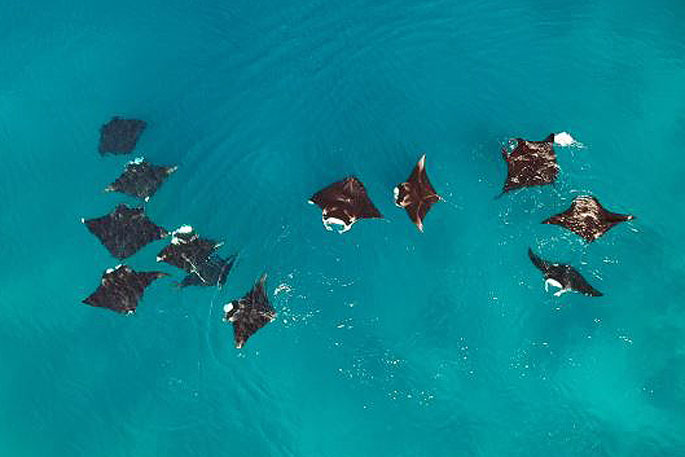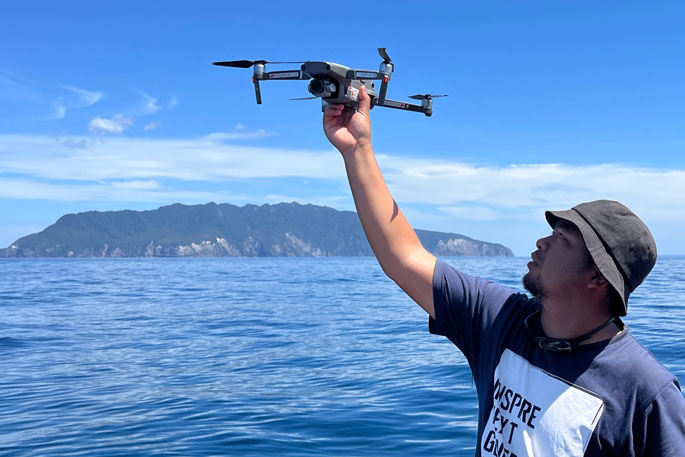How big is that manta ray? Drones give the answer in a pioneering study by University of Auckland postgraduate student Edy Setyawan.
Setyawan got the idea during fieldwork in 2019 in Raja Ampat, Indonesia, as he flew drones over the giant fish.
'It was manta season, and I flew a drone over a squadron of 20 to 30 reef manta rays feeding on the sea surface, getting clear visuals of size variations and distinguishing features such as the mating scars on sexually mature females,” says Setyawan, 36.
The technique was finessed with the addition of a PVC pipe – dubbed the 'MantaMeasure” – which floats in the vicinity of the rays to serve as a size reference for the images captured by drone.
The drone approach avoids disruption to the animals from alternative methods of monitoring such as divers entering the water to assess the rays' size.
Internationally, researchers affiliated to the Manta Trust charity are interested in adopting the method.
 Manta rays feeding.
Manta rays feeding.
The reef manta ray (Mobula alfredi), which has a wingspan of up to 5 metres, is listed as 'vulnerable to extinction” on the 'red list” of threatened species compiled by the International Union for Conservation of Nature.
Improved monitoring can help scientists to better gauge the health of manta ray populations in the face of overfishing and climate change, aiding conservation efforts.
'We demonstrated conclusively the value of using small, commercially available drones to accurately measure the body size of surface-feeding or cruising M. alfredi with minimal or no impact on the animals,” Setyawan and co-authors including Dr Mark Erdmann, Dr Ben Stevenson and Professor Rochelle Constantine wrote in the journal Drones.
The paper was entitled 'How Big Is That Manta Ray? A Novel and Non-Invasive Method for Measuring Reef Manta Rays Using Small Drones.”
Manta rays are known for their high intelligence, graceful swimming and traits such as 'somersault” feeding, where the creatures perform somersaults to keep moving but stay in a spot where food is plentiful.
'Using the drones, you can see the claspers of mature males and mating scars on the left wings of sexually mature females,” says Setyawan.
'The latter are often difficult to observe via in-water surveys, but using drones they are very obvious.”
The new method works for manta rays that are swimming or feeding on the surface, one of the main feeding strategies of the species.
Reef manta rays are distributed widely across the tropical and subtropical regions of the Indian and Western Pacific Oceans, but not in New Zealand waters. We have the larger oceanic manta ray (Mobula birostris), which reaches an impressive wingspan of 7 metres and is considered 'endangered” on the IUCN Red List.
'In tests in Auckland's Hauraki Gulf in February last year, this method worked well for oceanic manta rays as well,” says Setyawan.
The scientists want to draw attention to the manta rays in New Zealand waters and to encourage them to report sightings via a citizen science platform called Manta Watch New Zealand (@mantawatchnewzealand) on Facebook and Instagram.
A Manta Watch website is also being launched at www.mantawatchnz.org.
New Zealand Geographic magazine just featured Dr Erdmann and Setyawan's work on oceanic manta rays in New Zealand.



0 comments
Leave a Comment
You must be logged in to make a comment.